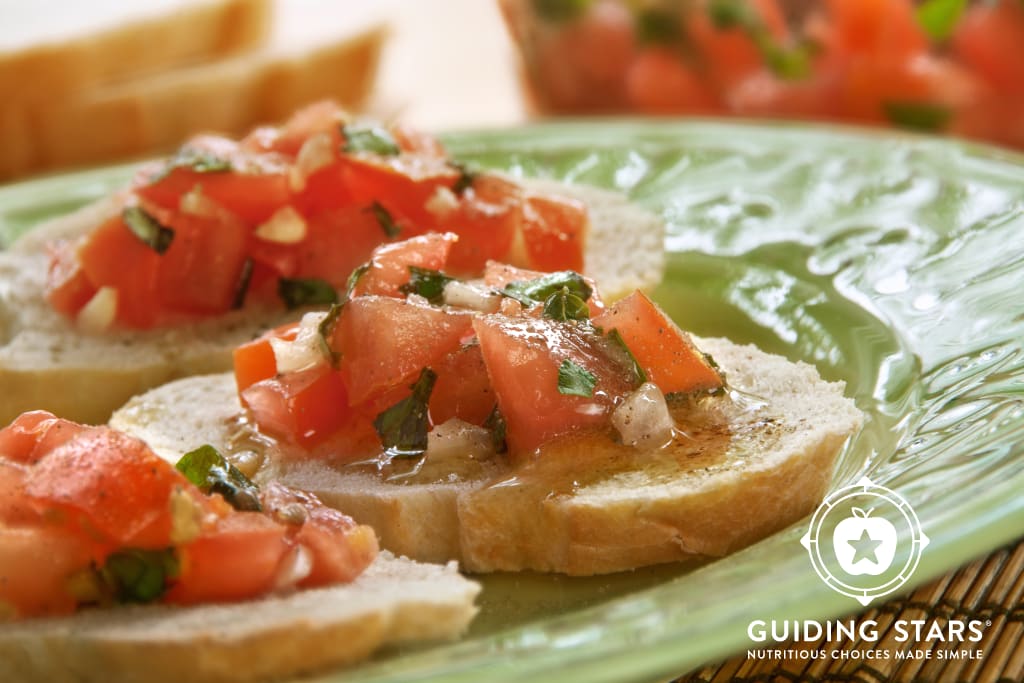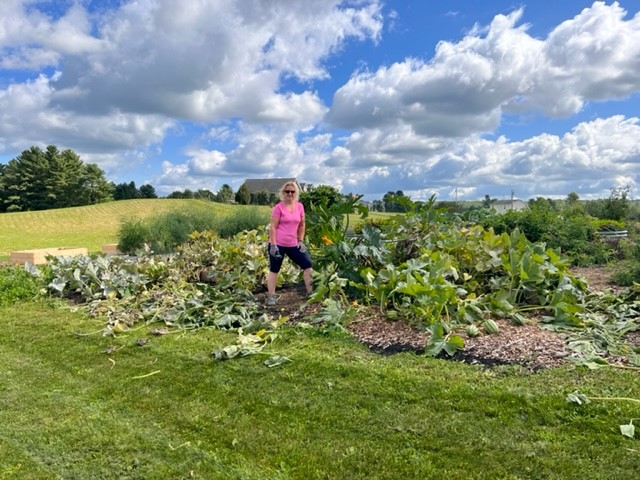
Since moving to a new home last summer, our garden has become a big source of joy…and work. Overall, my husband and I had a great first season. Though, we were challenged in numerous ways as well. We aren’t gardening experts by any means, but I thought I’d share our experience. Here are a few insights about issues that come up with home gardening, and how we handled them (or didn’t). I hope this is helpful, inspirational, and if nothing else, entertaining!
The plan
In 2021, we built a home in “the country”. Although that’s not exactly an accurate description of where we live, it feels rural to us. Our property is on former farmland, and is vastly bigger than what we had previously. We always wanted more space and dreamed of putting in a good-sized garden. Plus, I like to eat seasonally and growing your own produce accomplishes that. We did a little landscape work last fall and decided where the garden should go in the spring. During the winter, my husband and I planned what we’d grow. Our expectations were low since we didn’t have great soil in the garden spot (much of the topsoil was removed during the home construction process).
The process
In early spring, my husband started lots of seeds indoors under grow lights. As soon as we could, we planted the seedlings and some other plants that we purchased outdoors. One technique we used is called straw bale gardening (you can find a lot of information about it on YouTube). Basically, you grow plants in straw bales that you’ve prepared with plenty of water and fertilizer, but little to no actual dirt (we did use a bit of dirt). On a blustery spring day, we constructed a few simple homemade raised beds to supplement the bales. We bought a barrel-style composter with a crank handle that allows you to mix the compost easily, and began composting, too. We quickly outgrew that and started a larger, free-form compost pile on the ground near the garden. Eight fruit trees make up our mini orchard, and we are happy they are still alive since we’ve never grown fruit trees before. There is also a berry patch with blueberries and blackberries alongside two baby hazelnut trees. Oh, and a rhubarb plant is over there too, since I didn’t know where to put it! With some careful preparation and daily care, we’ve had plentiful veggies since early June.
The produce
We were knee-deep in vegetable goodness from the beginning of summer through well, now. In early June, we had snow peas, sugar snap peas, and rainbow chard. Then came beets, kale, bush beans, cucumbers, zucchini and yellow squash. In July, a few rounds of baby bok choy from seed, various kinds of tomatoes (both big and small), and finally pole beans (we are letting those dry on the vine). Our spaghetti squash and acorn squash vines are withering so I’ve cut the squash from the vine and am letting the stems dry up a bit. Our Brussels sprouts are large and plump, awaiting harvest after the first frost when supposedly they sweeten up a little and improve in flavor. Our asparagus plants grew tremendously this year, but they require a multi-year time investment before you harvest in the spring, so we are being patient. The garden has lost its lush look, and the bales are decomposing and creating organic matter that we will work into our garden soil next year. We expect the effort to improve the soil to take a couple years.

Top takeaways from the garden
For a first try, the garden has been successful beyond our dreams, and for that we are thankful. We have learned a lot, but of course still have lots to learn. You’ll see that in what I shared below.
Fight the 6-pack temptation
You know the saying “your eyes are bigger than your stomach”? Well, it goes for garden plants, too. We wanted (and planted) more than our space could easily accommodate. We partially blame the fact that seedlings often come in 6-packs. This is a classic problem for newbie gardeners! When plants are close together, they will crowd each other out, shade each other, and make for unhealthy and lower-yielding plants. Unless you have a very large garden, or a larger household to consume all the veggies, consider splitting those multi-packs with a friend. You’ll be happy you did when it’s harvest time and you’re not drowning in cucumbers.
Find a variety of “everyday” recipes for the food you’re growing
Pretty quickly, I realized that I needed a bigger recipe repertoire for zucchini and tomatoes. I did discover an amazing rich, dense chocolate zucchini loaf cake that I made 3 times within one month (a great gift for friends). Otherwise, the fancy tomato tarts and baked, stuffed chard leaves that tempted me early on never actually got made. Complicated recipes aren’t going to happen on a busy weeknight. I should have been more realistic and put together a small collection of simple recipes that called for common ingredients, and gave myself some grace. One recipe I turned to frequently (both for just us and for when we had company) was bruschetta. My version was topped with a little drizzle of bottled balsamic glaze and I brushed the olive oil onto the bread prior to toasting it on the grill. This Guiding Stars bruschetta is quick and easy and delicious, too. It can be prepared until your fresh tomato supply runs out (mine is still going). For other ideas, check out the large collection of easy, Guiding Stars-earning recipes.
Plan to can, freeze, or dehydrate
I froze a lot of our produce in various forms. I blanched some peas and squash before freezing, but later read that shredded zucchini didn’t need blanching. We will see how it goes when I want to use some to make zucchini bread in the winter. I dried cherry tomatoes (one of those things that we overplanted) and then froze those for even longer storage. I also made a lot of salsa and marinara sauce, as well as some tomato sauce from yellow cherry tomatoes that went into the freezer. I do know how to can things, but since I have an extra freezer, I thought it was easier to just do that. There were so many tomatoes that I couldn’t keep up! You can find good instructions for freezing and canning online.
Donate some of your garden goodies
For several weeks, I felt like I was drowning in Swiss chard. Then summer squash, then beets, then tomatoes. It’s hard to eat all of it right away, so a colleague suggested that I give some of it to a local food pantry. They typically need more fresh foods than they can supply. I found one that accepts homegrown produce via Ampleharvest.org. Soon, I was making weekly deliveries to the food pantry and that helped both me and them. Win-win!